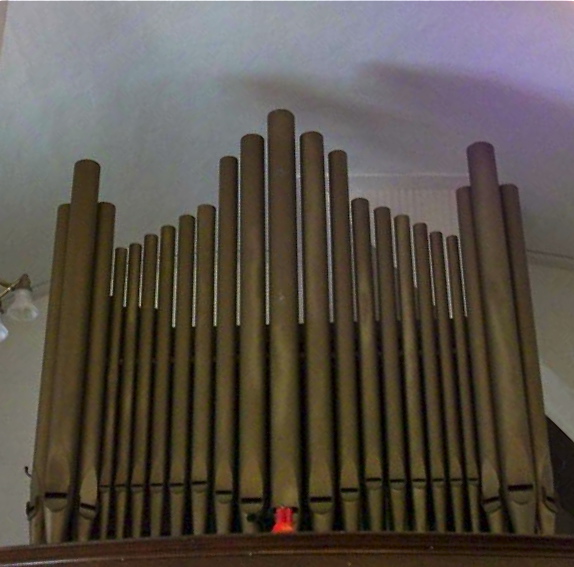The Organ of Zum Kripplein Lutheran Church in Iron Ridge,
Wisconsin, U. S. A., Hinners, 1905
The Church

Zum Kripplein Christi is located in Dodge County, Wisconsin, about two miles south of State Highway 33 between Horicon
and Allenton. It can be viewed on Google Maps through this link. Zum Kripplein Christi is German for “To the little
manger of Christ.” The present building was built in 1864, and the congregation operated a Lutheran Elementary
School until 2006. The building has thick plastered stone walls. The ceiling has a unique curve. The interior looks like it hasn’t
changed in the last hundred years.

The Organ
The Hinners organ of Zum Kripplein Christi Ev. Lutheran Church in Iron Ridge, Wisconsin was built around 1905.
Looking at the Organ Historical Society database, there are many Hinners organs from that era that are nearly identical.
Other organ builders of that time (such as Wangerin-Weickhardt) also built one manual organs with split ranks with similar
stop lists.
It is a single manual mechanical action instrument. Each manual rank is split at middle C (B2/C3) so in some ways, it can
function as a two-manual instrument with different registrations for right and left hands.1 The 27 note pedalboard is flat
with parallel pedals.
There are two mechanical preset pedals, one is forte which draws all manual stops, and the other is piano, which cancels
the Bourdon 16, Diapason 8’ and Principal 4’ stops (Forte must be engaged before piano can work.)
All ranks are enclosed except the Pedal Bourdon, Diapason 8’ and Principal 4’.
There is a tremulant that affects all ranks
(non-functional at this time), and also a “Bellows Signal” stop-knob which did not appear to work. The organ now has an
electric blower activated by a switch.
The Virtual Model
The organ is replicated to show how it would sound and function in pristine condition.
The tremulant on the original organ was non-functioning. Here it is given a frequency of 4.4 Hz.
The key-action and swell open/close sounds are from the Jaeckel organ of St. Paul’s in Fort Atkinson.
The stop-action sounds and calcant bell are recordings of simulations.
The bellows pumping sounds are genuine, but from another organ.
The swell pedal graphic is from a photo of another Hinners organ from the same year. Hinners continued to use its
H & A pedals even after the Albertsen name was dropped. The Zum Kripplein Christi Hinners has a volume pedal with a
diamond pattern on the “sole” and a star pattern on the “heel”.
Download here:
https://jorgan.info/base/arch/ps/jo/hi/j3.20_Hinners_1905.7z